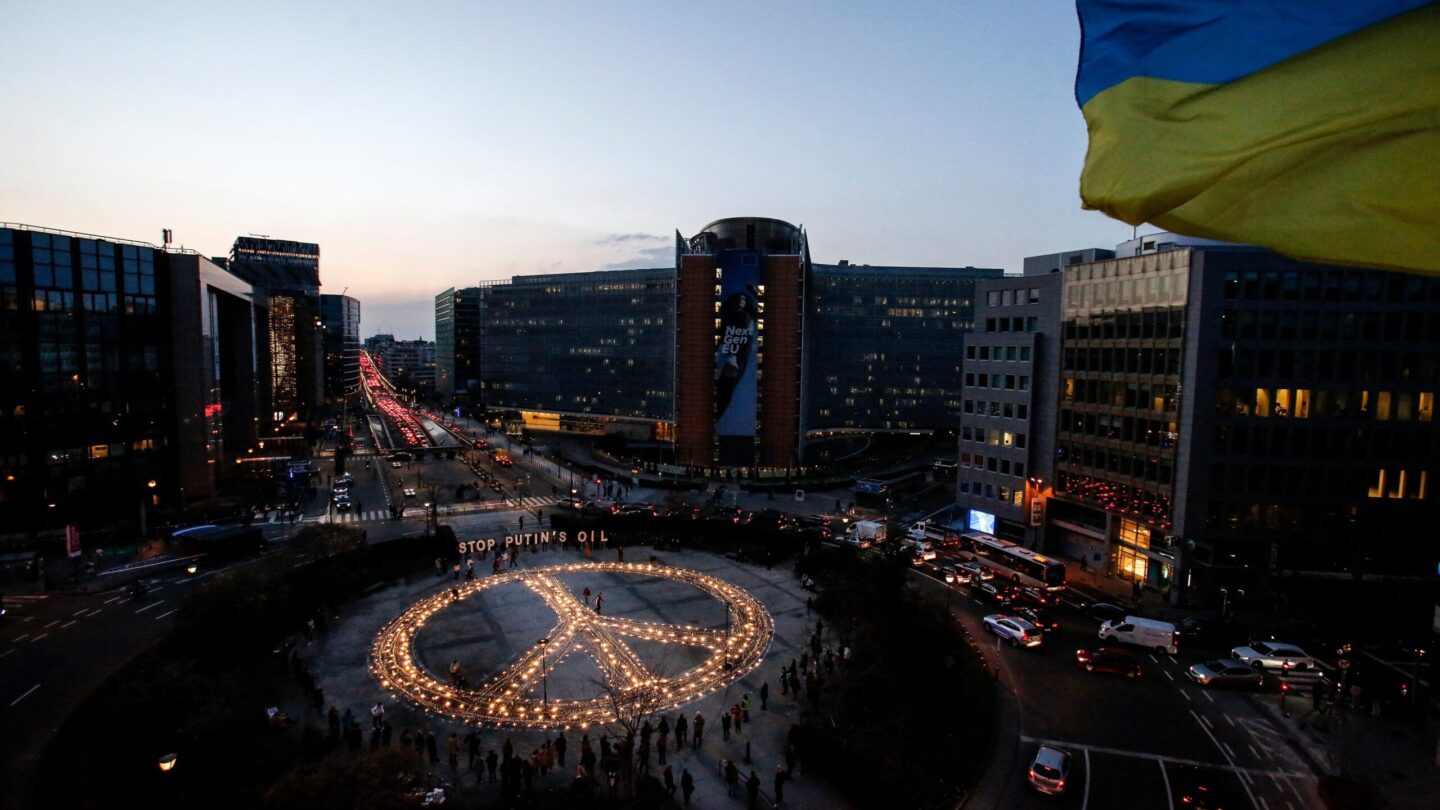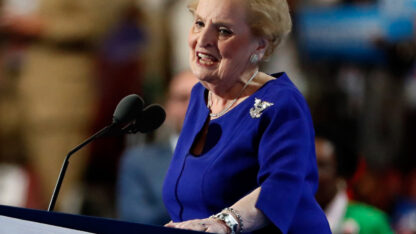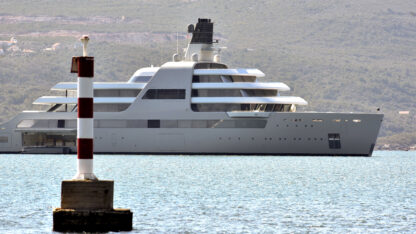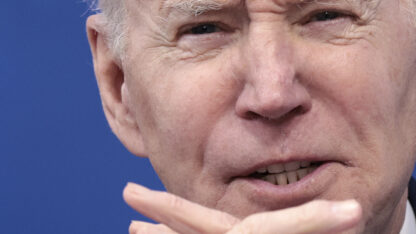BRUSSELS — As the Russian invasion of Ukraine grinds through its fourth week, President Vladimir Putin’s greatest accomplishment so far may be one he never intended: a unified Europe.
This is a fractious continent, largely led by a bureaucratic institution, the European Union, where it can be difficult and slow to reach the consensus required to act. But the war has spurred the EU to unprecedented action and brought Europe together in ways not seen in decades.
“The level of unity and speed has been remarkable,” says Bruno Lete, a senior fellow at the German Marshall Fund of the United States, a think tank, over coffee near the EU headquarters. “I would say it’s the first time that we’ve seen the European Union moving so fast.”
Now, as President Biden heads to Brussels on Thursday and Friday for emergency meetings with NATO and EU officials, Europe’s continued unity will be crucial to raise pressure on Russia to end its war on Ukraine.
The EU is taking a more assertive role
Relying on intelligence reports showing Moscow planned to invade, the EU began drafting legislation for sweeping sanctions two weeks before Russian troops crossed into eastern Ukraine in February, according to an EU official. That advance planning allowed the EU to ban Russian airlines from European airspace quickly and seize assets from oligarchs close to Putin. For instance, the French government confiscated a superyacht linked to the Russian oligarch, Igor Sechin, who served as the country’s deputy prime minister and is now the CEO of the state oil company, Rosneft. In Italy, officials seized multimillion-dollar villas in Tuscany and on Lake Como. The EU also did something unprecedented: It began pouring hundreds of millions of dollars’ worth of weapons into a country — Ukraine — that isn’t even a member.
“I think from this crisis what has become evident is the European Union is not shying away from taking a more profiled role in terms of providing security to the continent and beyond,” says Stefano Sannino, who runs the European External Action Service, essentially the EU’s foreign service.
Allies are sending weapons so Ukraine can hit Russian tanks and helicopters
In addition to the EU, NATO member states have also been pouring weapons into Ukraine. Shipments include Javelin anti-tank systems and Stinger missiles, which can target helicopters. There are still no signs of Russian troops on the roads of western Ukraine, so the shipments have rolled through unimpeded for weeks, providing a steady flow of weapons to a Ukrainian military that is outgunned by Russia’s larger army.
“Obviously, the Ukrainian forces wouldn’t be so successful if they wouldn’t have modern weaponry,” says Juri Luik, Estonia’s ambassador to NATO. Asked just how much weaponry NATO allies have sent into Ukraine, Luik laughs and says, “I can only respond that it’s a lot.”
He adds that NATO countries have slashed the usual bureaucracy surrounding weapons transfers to speed up the process. “The distance from sending a weapon to reaching the people who use it is really … being taken to the absolute minimum,” says Luik.
Brussels is stunned by Russia’s poor battlefield performance
In addition to the ease with which Europe has been able to resupply Ukrainian troops, officials in Brussels are also struck by just how poorly the Russian army has performed so far. Instead of toppling the Ukrainian government at the outset, as Western intelligence sources say Putin had planned, Russian forces are still struggling to take over major cities. They’re increasingly relying on artillery and often hitting civilian targets. The United Kingdom’s defense intelligence chief, Lt. Gen. Jim Hockenhull, said last week Russia is now pursuing a strategy of attrition, which will likely involve more indiscriminate use of firepower and more civilian deaths.
“It’s a massive failure of Russian armed forces and Russian leadership and Putin himself,” Luik says, referring to the way the war has played out so far.
A no-fly zone is still a no-go, but Europe’s bolstering defense
So far, NATO has rejected imposing a no-fly zone for fear it will lead to direct combat between Russia and NATO allies and widen the conflict into a regional war. NATO officials point out that a no-fly zone would not only involve shooting down Russian jets, but also destroying Russian air defense in Ukraine and across the border in Russia. Olga Oliker, the International Crisis Group’s program director for Europe and Central Asia, says a no-fly zone doesn’t make much strategic sense because the Russians haven’t relied much on planes to strike targets.
“It’s mostly doing that with missiles and artillery,” Oliker said. “Your no-fly zone isn’t going to do you any good with that.”
In the meantime, NATO allies are looking for ways to continue to arm Ukraine while also bolstering their own defenses against Russia. Slovakia says it is willing to send Ukraine Soviet-made, S-300 missile systems that can take down jets miles up in the air as long as a fellow NATO ally is able to replace them. NATO allies have sent Patriot air-defense missile systems to Slovakia to be deployed to defend against a Russian attack. The U.K. is sending the Sky Sabre, a medium-range, anti-air missile system, to Poland with about 100 British soldiers to operate it. Earlier this month, Russian missiles struck a Ukrainian military training base about 15 miles from the Polish border, which Ukrainian officials said killed 35 people and injured more than 100 others.
Germany, meanwhile, is planning a major defense spending boost in a marked shift after years of resisting allies’ calls to do so.
Europe is more united, but not in lockstep
Challenges ahead could still test Europe’s unified front. So far, there are no reports that the Russians have struck any weapons shipments, but Roland Freudenstein, who runs the Brussels office of Globsec, a think tank, says if and when that happens, a debate among European nations will probably unfold like this: “Shall we continue?” Freudenstein says. “Should we find alternative routes or shall we stop? And I predict there will be countries that say ‘now is the time to stop.’ “
There are also signs of division in the EU over whether to ban imports of Russian oil to weaken Putin’s ability to wage war. Hungary has already threatened to block such a move.
“We will not support sanctions that could pose a risk to energy supplies for Hungary,” said Hungarian Foreign Minister Peter Szijjarto, according to Hungarian news reports.
At the same time, as Russian missiles and artillery continue to take a toll on Ukrainian cities and civilian casualties mount, so will public pressure grow for NATO to do more.
“There might be big moral dilemmas,” says Peter Bator, Slovakia’s permanent representative to NATO. “Looking at Ukraine, seeing thousands of civilians being killed almost every day, we cannot just sit and watch.”
Deividas Matulionis, Lithuania’s ambassador to NATO, says he cannot speak for how the alliance might react if Russia systematically demolishes Ukrainian cities and Ukraine begins to resemble war-battered Syria. But, he says, “if something similar would happen and NATO’s not doing anything about it, then there will be a big question of credibility.”
NPR London producer Jessica Beck contributed to this report.
Copyright 2022 NPR. To see more, visit https://www.npr.org.
9(MDAxODM0MDY4MDEyMTY4NDA3MzI3YjkzMw004))

9(MDAxODM0MDY4MDEyMTY4NDA3MzI3YjkzMw004))








